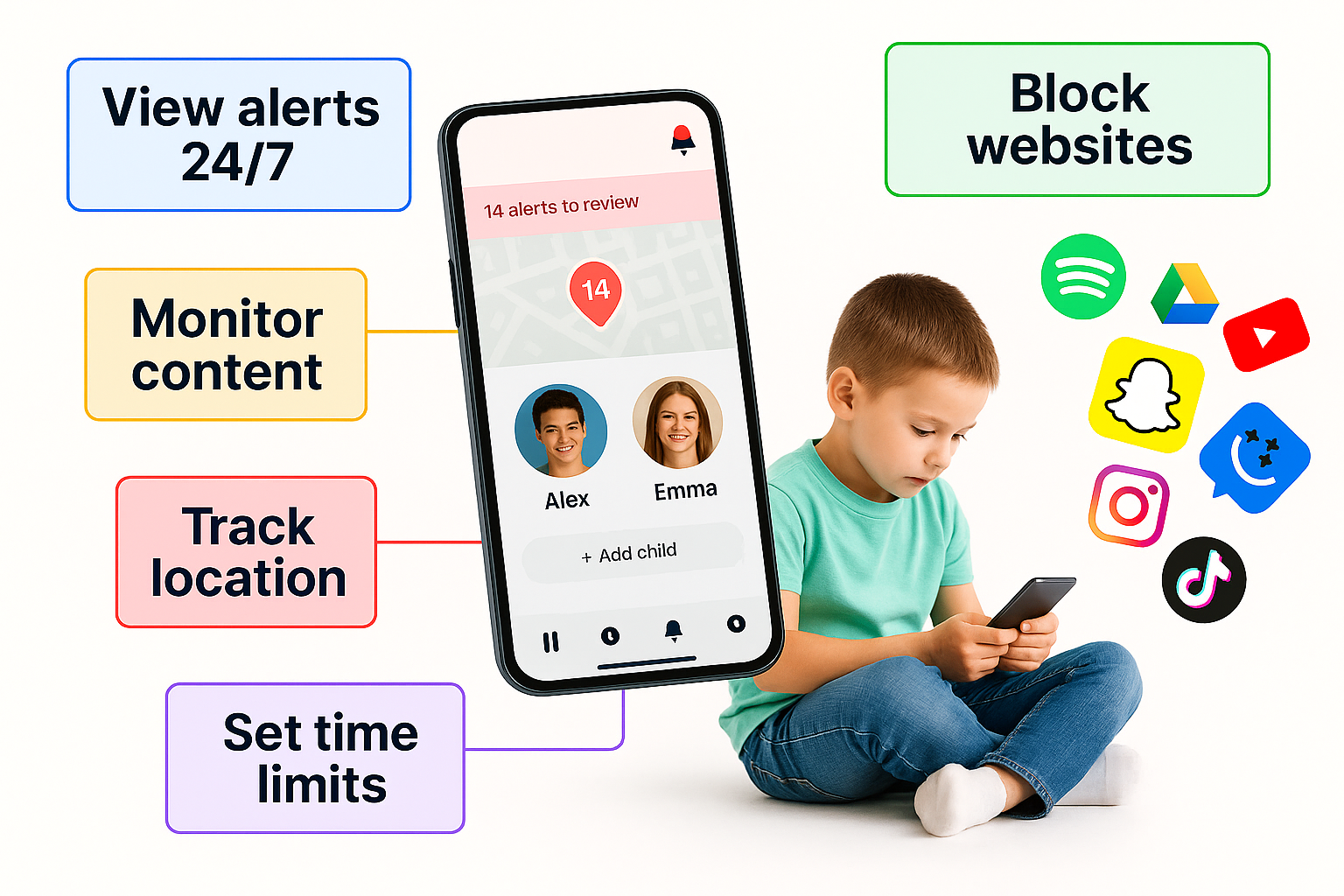When Your Child’s Phone Becomes Their Coach: Using Guided Tech to Build Life Skills, Not Just Screen Time
More Than Just “Here’s Your Phone
When you hand your child their first smartphone or safe kids‑device, you might think: “Great—now they’re connected.” But for so many families it stops there: phone in hand, rules enforced, but little growth.
What if instead you handed them a coach disguised as a phone? A device that doesn’t just entertain or distract, but supports them in building habits, resilience, self‑control, and responsibility. By shifting your mindset from screen management to skill development, you make the phone a partner in your child’s growth
Why Phones Can Be Coaches (If Set Up Right)
- Immediate Feedback – Modern device dashboards can show daily usage, patterns, prompts like “You exceeded your goal” or “Well done for staying off social apps evenings.” This mirrors a coach giving you feedback.
- Goal Setting & Rewards – Instead of “play until I say stop,” you can use the phone to set small goals: “Finish your reading app 30 minutes today, then you earn 15 minutes game time.”
- Self‑Regulation Practice – The phone teaches when to say “No” to distractions, when to pause, when to switch focus. Those are life‑skills.
- Reflection & Growth – Weekly check‑ins become like “game film” with your child: look at what they did, what went well, what to improve, what will be next week’s challenge.
How to Set Up Your Phone‑Coach Framework
Step 1: Define “What We Want to Build”
Have a parent‑child talk: Ask your child what they want to gain from having a phone, beyond games and texts. Ideas: “Stay in touch with friends,” “Help me learn guitar,” “Track my steps and sleep better.”
Write it down.
Step 2: Choose the Right Device or Settings
Pick a phone or kids‑device with features that support coaching:
- Usage dashboards
- Approved app workflows
- Time‑limit and reward features
- Location & safe‑zone features
- Prompts or reports for reflection
Step 3: Create a Weekly “Skill & Screen” Plan
Each week:
- Set one small goal (e.g., “30 minutes reading app before 7pm”).
- Use the phone to track completion.
- Decide reward or next‑week challenge.
- Have family check‑in each Sunday: discuss how the phone helped build the skill, what got in the way.
Step 4: Use the Phone for Growth, Not Just Entertainment
Design usage:
- One app for creativity (drawing, music, story‑making)
- One app for connection (family call, group chat with safe friends)
- One app for wellness (step tracker, sleep tracker, journal)
- Game time only after two of the above are done
Step 5: Transition From Micro‑Control to Macro‑Guidance
As your child shows maturity:
- Loosen strict time limits, but shift to they set their own goals and review with you
- Let them choose one new app each month (with your approval)
- Move check‑in from weekly to bi‑weekly, then monthly
Real‑Life Scenario: From Screen Chaos to Skills Coach
Imagine 10‑year‑old Jake.
He gets his first phone. Almost immediately: games during homework. Phone under covers at night. Neglected chores. Quiet at dinner.
His parents switch gears:
- They define goals: “Finish homework, help dog walk, 30 minutes reading”.
- Configure his phone: dashboard shows progress. He gets reward points.
- Every Sunday they discuss: “What went well? What can we improve?”
After a month: Jake uses his phone to schedule his dog walk and homework, not just react to games. He asks for his phone before outing instead of after.
The phone became a helper instead of a hurdle.
Why This Strategy Works for Parents Too
- You’re less in battle mode: no yelling “Put the phone down!” because you designed the goals together.
- You build trust and independence, so you’re preparing your child for future tech freedom with competence.
- You convert the phone from being the problem to being a tool in your family.
Tips to Keep Momentum
- Celebrate small wins: “You met your reading goal 3 weeks in a row.”
- Adjust as they grow: Update goals, device settings, and unlock new levels of responsibility.
- Stay flexible: Some weeks will be harder—don’t reset everything; talk about how the phone felt to use.
- Model the same: Maybe you have a “phone coach” habit too—track your own reading, steps, quiet time.
The First Phone Is Less About Access, More About Growth
When you think of a child’s first phone as a launch of skills, responsibility and self‑control—not just a gadget—you change everything.
It’s not about how many hours they’re on the device. It’s about what they’re learning while on it.
Choose the right device, build the right routines, make it a coach—and watch as your child grows into the technology, rather than being grown around by it.

